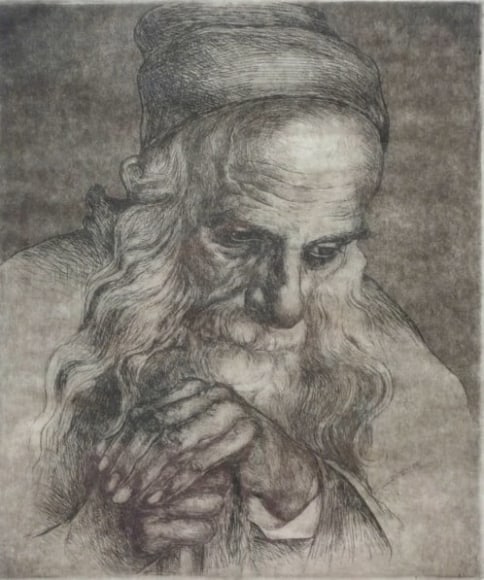Beloosesky Gallery is interested in purchasing artworks by Joseph Budko.
Please call (917) 749-4557 or email us at info@beloosesky.com.
Joseph Budko (1888-1940) was born in Poland, studied art in Germany with Hermann Struck and became one of the Jewish graphic artists who started the revival of woodcut and one of the first great modern book illustrators. Budko soon developed his own powerful style, influencing many great artists, Marc Chagall among them.
Eventually moving to Israel, Joseph Budko became the head of the Betzalel Academy of Arts in Palestine when it re-opened in 1935 and remained in this position until his untimely death in 1940.
Joseph Budko was amongst an influential group of graphic minded Jewish artists who embraced the revival of the woodcut, a medium which lent itself perfectly to express the views of Israel and Jewish culture in various lands. Budko has been credited with resurrecting the spirit of book illustration by elevating it to modern design.
Joseph Budko was an accomplished graphic artist especially with etchings, drypoint, and woodcuts.. He created numerous illustrations, including The Jews of Bacharach (1921) by Heinrich Heine, Psalms (1919), The Babylonian Talmud (1924) of Bialik and works of Sholem Asch, Shmarya Gorelik, David Frischmann, Arno Nadel and Sholem Aleichem. He frequently used Hebrew characters. For the Jewish Verlag, the publisher of Jewish art and culture Fritz Gurlitt and the publisher Eshkol designed Budko book covers and signs for the New Jewish Monatshefte. Budko aspired to Jewish art, which was supported by traditional Jewish symbolism and ideas. In this context, his portfolios with clearly religious statements including Haggadah shel Pesach (26 drypoint Works, 1917), or individual graphics, particularly the mezzotint leaves of Moses or Jeremiah comforting the mother Rahel to see (all between 1917 and 1930). Another topic for Budko were taken from his youth in east-Jewish Schtetlech and the motive of the Wandering Jew, he often represents the confrontation of an old man with a young woman. After 1933, he also worked with Israeli landscapes in his art.

